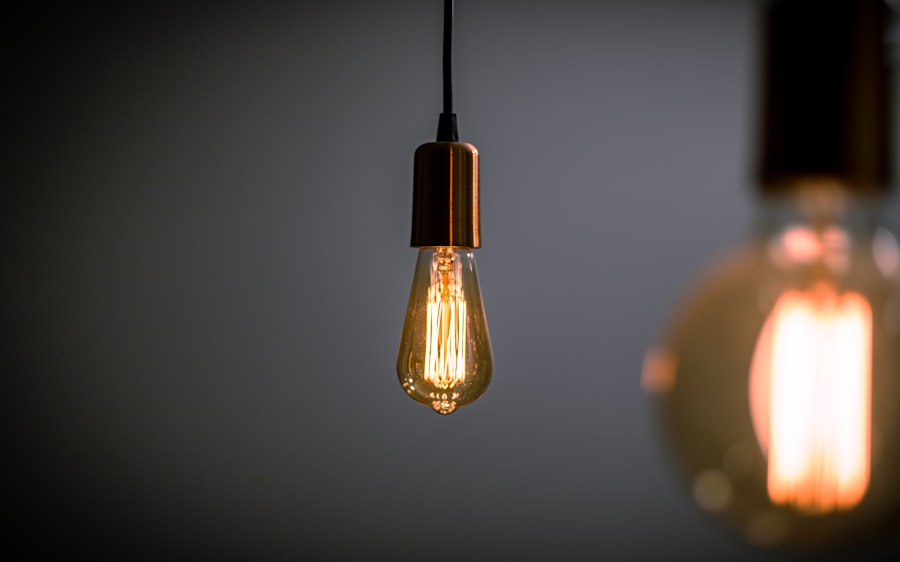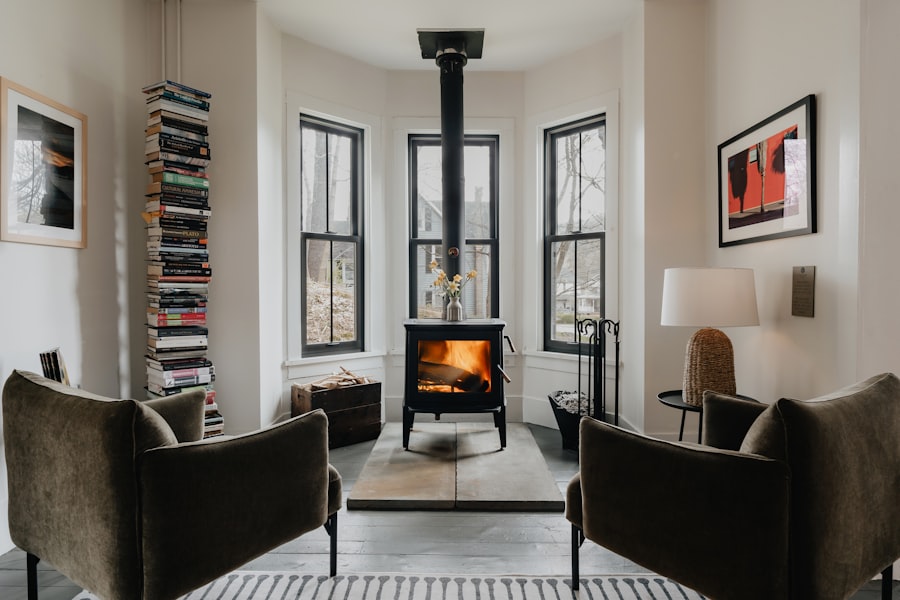Heat lamps are crucial for raising young chickens, particularly during their first few weeks of life. These devices provide essential warmth that chicks require for optimal growth and development. Newly hatched chicks lack the ability to effectively regulate their body temperature and depend on external heat sources for warmth.
Heat lamps serve as a substitute for the natural warmth typically provided by a mother hen, creating an environment conducive to healthy chick development. The importance of heat lamps is amplified during colder seasons or in regions with cooler climates. Chicks are highly susceptible to low temperatures, and without adequate warmth, they can rapidly become chilled, potentially leading to illness or mortality.
By maintaining a consistent and appropriate temperature, heat lamps create a safe and comfortable environment for young chicks, allowing them to focus on growth without the stress of temperature regulation. In addition to providing warmth, heat lamps play a crucial role in maintaining optimal brooder temperatures. This controlled environment is essential for the chicks’ overall health, growth, and development.
Heat lamps are thus a fundamental component in establishing a nurturing habitat for young chickens, significantly contributing to their well-being during the critical early stages of life.
Table of Contents
- 1 Determining the Right Age to Remove the Heat Lamp
- 2 Factors to Consider When Removing the Heat Lamp
- 3 Monitoring Chickens After Removing the Heat Lamp
- 4 Transitioning Chickens to Outdoor Temperatures
- 5 Potential Risks of Removing the Heat Lamp Too Early
- 6 Tips for Successfully Raising Chickens Without a Heat Lamp
- 7 FAQs
Key Takeaways
- Heat lamps are important for young chickens to maintain their body temperature and promote healthy growth.
- The right age to remove the heat lamp is typically around 6 weeks old, when chickens have developed enough feathers to regulate their own body temperature.
- Factors to consider when removing the heat lamp include the outdoor temperature, the number of chickens in the brooder, and the availability of shelter.
- It’s important to monitor chickens closely after removing the heat lamp to ensure they are adjusting well to the change in temperature.
- When transitioning chickens to outdoor temperatures, it’s important to gradually expose them to the cooler environment to prevent shock.
- Removing the heat lamp too early can lead to health issues such as stunted growth, weakened immune system, and even death in extreme cases.
- Tips for successfully raising chickens without a heat lamp include providing adequate shelter, proper nutrition, and monitoring their behavior and health closely.
Determining the Right Age to Remove the Heat Lamp
Feather Development and Temperature Regulation
A general rule of thumb is to start reducing the heat provided by the lamp when the chicks are around 4-6 weeks old. At this age, they have developed enough feathers to help regulate their body temperature more effectively, and they are better equipped to handle slight fluctuations in temperature.
Observing Chick Behavior
Another way to determine the right age to remove the heat lamp is by observing the behavior of the chicks. If they are actively moving away from the heat source and spending more time exploring and pecking at food and water, it may be a sign that they are ready to be weaned off the heat lamp.
Monitoring Ambient Temperature and Gradual Transition
It’s important to monitor their behavior closely and make adjustments accordingly. Additionally, keeping an eye on the ambient temperature in the brooder is essential. As the chicks grow older, they will be able to tolerate lower temperatures, and it may be possible to gradually reduce the heat provided by the lamp. Ultimately, the right age to remove the heat lamp will depend on a combination of factors such as feather development, behavior, and ambient temperature, and it’s important to make this transition gradually to ensure the chicks’ comfort and well-being.
Factors to Consider When Removing the Heat Lamp

When it comes time to remove the heat lamp from the brooder, there are several factors that need to be taken into consideration to ensure a smooth transition for the young chickens. One important factor is the ambient temperature both inside and outside of the brooder. It’s crucial to make sure that the chicks will be able to maintain a comfortable body temperature without the heat lamp.
This may involve gradually reducing the heat provided by the lamp over a period of time to allow the chicks to acclimate to slightly lower temperatures. Another factor to consider is the feather development of the chicks. As they grow older, they will develop more feathers, which will help them regulate their body temperature more effectively.
It’s important to wait until the chicks have developed a sufficient amount of feathers before removing the heat lamp completely. Additionally, it’s essential to provide alternative sources of warmth for the chicks, such as cozy bedding or huddle boxes, especially if they are being transitioned to cooler outdoor temperatures. These alternative sources of warmth can help ease the transition for the chicks and provide them with a sense of security as they adjust to their new environment.
Furthermore, it’s important to monitor the behavior of the chicks closely during this transition period. If they appear stressed or are huddling together excessively, it may be a sign that they still require some additional warmth. Making sure that all these factors are taken into consideration when removing the heat lamp will help ensure a smooth and successful transition for the young chickens.
Monitoring Chickens After Removing the Heat Lamp
After removing the heat lamp from the brooder, it’s crucial to continue monitoring the young chickens closely to ensure that they are adjusting well to their new environment. One important aspect to monitor is their behavior. If the chicks are active, alert, and spending time exploring and pecking at food and water, it’s a good indication that they are comfortable and adjusting well to the change in temperature.
On the other hand, if they appear lethargic or are huddling together excessively, it may be a sign that they still require some additional warmth. Another aspect to monitor is their overall health. It’s important to keep an eye out for any signs of illness or distress, such as sneezing, coughing, or unusual droppings.
Additionally, monitoring their food and water intake is essential. If they are eating and drinking regularly, it’s a positive sign that they are adjusting well to their new environment. Furthermore, it’s important to continue providing alternative sources of warmth for the young chickens, especially if they are being transitioned to cooler outdoor temperatures.
Cozy bedding, huddle boxes, or even additional heating sources can help ensure that the chicks remain comfortable and secure as they adjust to their new surroundings. Overall, ongoing monitoring of the young chickens after removing the heat lamp is essential for their well-being and successful transition.
Transitioning Chickens to Outdoor Temperatures
Transitioning young chickens from a controlled indoor environment to outdoor temperatures is an important step in their development. This transition should be done gradually to allow the chickens to acclimate to their new surroundings without becoming stressed or overwhelmed. One way to facilitate this transition is by gradually exposing the chickens to outdoor temperatures for short periods of time each day.
This can help them adjust slowly and build up their tolerance to cooler temperatures over time. Another important aspect of transitioning chickens to outdoor temperatures is providing them with adequate shelter and protection from the elements. This can include providing access to a sheltered outdoor area where they can seek refuge from wind, rain, or extreme temperatures.
Additionally, providing cozy bedding or huddle boxes in their outdoor environment can help them stay warm and comfortable as they adjust to cooler temperatures. It’s also important to continue monitoring the behavior and health of the chickens during this transition period. If they appear stressed or are huddling together excessively, it may be a sign that they still require some additional warmth or protection from the elements.
By taking these factors into consideration and facilitating a gradual transition, young chickens can successfully adjust to outdoor temperatures and continue to thrive in their new environment.
Potential Risks of Removing the Heat Lamp Too Early

Risk of Chilling
One potential risk is that they may become chilled without a consistent source of warmth. Chicks are more susceptible to cold temperatures in their early weeks of life, and without a heat source, they can quickly become chilled, which can lead to illness or even death.
Risk of Stress
Another potential risk of removing the heat lamp too early is that it can cause stress for the young chickens. Abrupt changes in temperature or environment can be stressful for chicks, which can impact their overall health and well-being. It’s important to make any transitions gradually and provide alternative sources of warmth or protection from cooler temperatures as needed.
Impact on Growth and Development
Furthermore, removing the heat lamp too early can also impact the growth and development of young chickens. Without a consistent source of warmth, chicks may not be able to focus on growing and thriving as effectively as they would with proper heat support. This can have long-term effects on their overall health and development.
Conclusion
Overall, removing the heat lamp too early can pose several risks for young chickens, including potential illness, stress, and impacts on their growth and development. It’s important to carefully consider all factors before making this transition and ensure that young chickens have developed enough feathers and are able to regulate their body temperature effectively.
Tips for Successfully Raising Chickens Without a Heat Lamp
Raising chickens without a heat lamp is possible with careful planning and consideration of their needs. One tip for successfully raising chickens without a heat lamp is providing alternative sources of warmth such as cozy bedding or huddle boxes. These can help young chickens stay warm and comfortable as they adjust to cooler temperatures.
Another tip is ensuring that young chickens have access to sheltered outdoor areas where they can seek refuge from wind, rain, or extreme temperatures. Providing adequate protection from the elements is crucial for their well-being as they transition from an indoor environment to outdoor temperatures. Additionally, monitoring their behavior and health closely during this transition period is essential.
If they appear stressed or are huddling together excessively, it may be a sign that they still require some additional warmth or protection from cooler temperatures. Furthermore, providing a balanced diet with access to fresh water at all times is crucial for their overall health and well-being as they adjust to their new environment. Overall, successfully raising chickens without a heat lamp requires careful planning, consideration of their needs, and ongoing monitoring of their behavior and health during this transition period.
If you’re wondering how long to keep chickens under a heat lamp, you may also be interested in learning about the size of a coop needed for chickens. Poultry Wizard has a helpful article on how big a coop needs to be for a chicken, which can provide valuable information for ensuring your chickens have a comfortable and safe living space.
FAQs
How long should I keep chickens under a heat lamp?
Chickens should be kept under a heat lamp for the first 6 weeks of their life. After that, they should be gradually weaned off the heat as they become more feathered and acclimated to the ambient temperature.
What temperature should the heat lamp be set to for young chickens?
For the first week, the temperature under the heat lamp should be kept at 95°F (35°C). Each week, the temperature can be reduced by 5°F (2.8°C) until the chicks are fully feathered and can maintain their own body heat.
What type of heat lamp should I use for my chickens?
It is recommended to use a red or infrared heat lamp for young chickens, as this type of light is less disruptive to their natural sleep patterns. Make sure to use a heat lamp specifically designed for use with animals to ensure safety.
What are the signs that my chickens are ready to be weaned off the heat lamp?
When the chickens are fully feathered and are able to maintain their body temperature without huddling under the heat lamp, it is a sign that they are ready to be weaned off the heat. Additionally, if they are actively avoiding the heat lamp and spending more time exploring and foraging, they are likely ready to be weaned off the heat.
Meet Walter, the feathered-friend fanatic of Florida! Nestled in the sunshine state, Walter struts through life with his feathered companions, clucking his way to happiness. With a coop that’s fancier than a five-star hotel, he’s the Don Juan of the chicken world. When he’s not teaching his hens to do the cha-cha, you’ll find him in a heated debate with his prized rooster, Sir Clucks-a-Lot. Walter’s poultry passion is no yolk; he’s the sunny-side-up guy you never knew you needed in your flock of friends!







